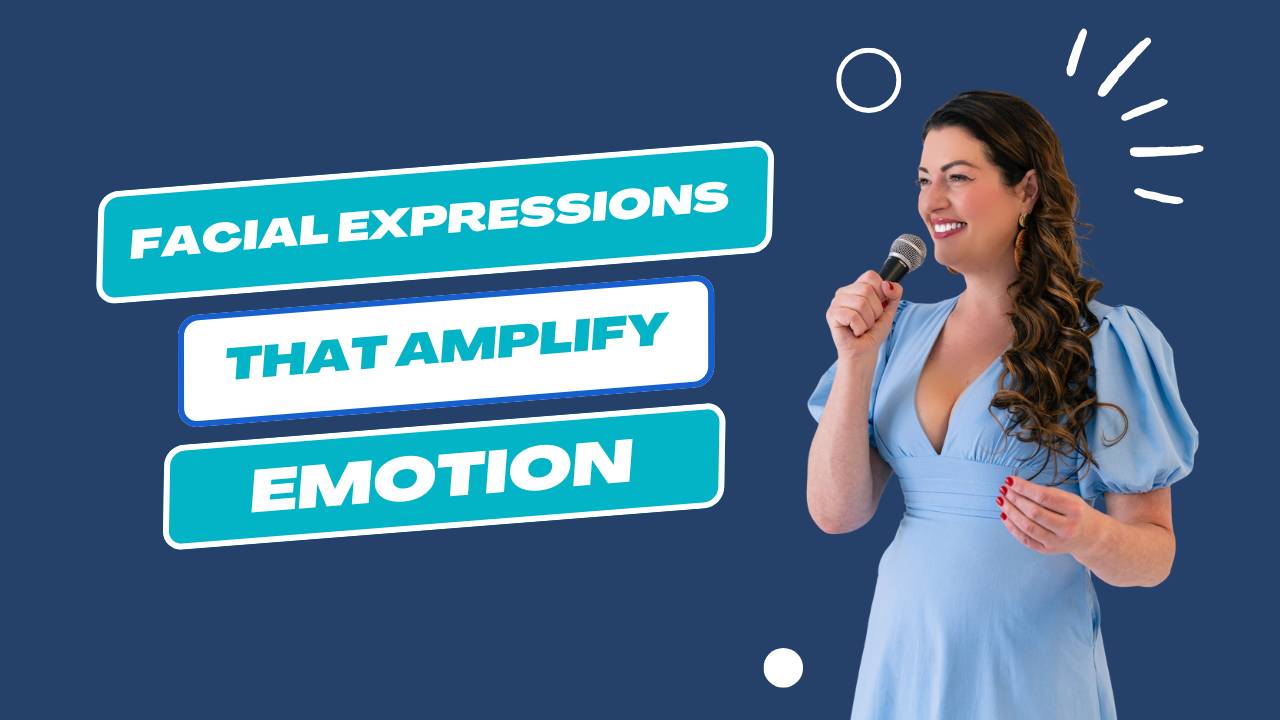Facial expressions that amplify emotion (without looking over-the-top)

We’ve all seen that speaker — the one whose facial expressions look like they’ve been borrowed from a pantomime. Overly exaggerated smiles, shocked eyebrows, and “drama school” intensity that feels more like performance than presence. But here’s the thing: your face is one of your most powerful tools on stage. When used well, it can amplify emotion, build connection, and make your message unforgettable. When overdone, it distracts, confuses, and can even make you look inauthentic.
Let’s break down how to use your facial expressions to amplify emotion without going full Broadway.
1. Start With Genuine Emotion, Not Performance
The most magnetic speakers don’t pretend to feel, they actually feel. Before you walk on stage, take a moment to reconnect with your message. Ask yourself, “Why does this matter to me?” When you speak from genuine emotion, your face naturally follows. You’ll find that your smile becomes warmer, your eyes more expressive, and your entire presence more believable.
Audiences are wired to detect micro-expressions those fleeting flashes of emotion that reveal how we really feel. Authenticity isn’t about acting happy, sad, or passionate. It’s about letting the audience see that you care.
2. Use Your Eyes as the Emotional Anchor
Your eyes are your strongest emotional amplifier. They can project excitement, empathy, curiosity, or conviction often more powerfully than your words. Practice delivering lines with intention in your eyes. For instance, when sharing a success story, let your eyes light up. When describing a challenge, allow them to soften.
One trick: imagine you’re having a one-on-one conversation with someone in the audience. This instantly shifts your focus from “performing” to “connecting.” The result? Your expressions become subtle, sincere, and relatable.
3. Match Your Expressions to Your Message
If your story is about triumph, your face should reflect pride and joy. If you’re describing a challenge, your expression should convey thoughtfulness or vulnerability. The key is congruence.
Mismatched expressions like smiling while discussing a serious topic can create emotional dissonance. The audience might not consciously register it, but they’ll feel that something’s off. Before rehearsing your talk, mark key emotional beats in your script and practice aligning your facial tone with each moment.
4. Think “Subtle Magnification,” Not “Stage Drama”
In everyday conversation, your expressions are small. On stage, you need to magnify them slightly so they’re visible from the back of the room but only slightly. The sweet spot is around a 20–30% amplification.
Film yourself rehearsing. If you look natural on camera, you’ll look expressive on stage. If you look exaggerated on video, it’ll read as theatrical in person.
5. Practice Resting Presence
Even when you’re not speaking, your face communicates. A “neutral” face can sometimes appear disinterested or tense. Train your resting presence relaxed eyes, slight smile, and a calm, engaged posture. This helps maintain warmth and attention between speaking moments.
6. The Golden Rule: Emotion First, Expression Second
Don’t force it. Emotion should drive expression, not the other way around. When your message moves you, it will naturally move your face and your audience.
Your facial expressions are the punctuation marks of your speech. They emphasise, connect, and humanise your message. When used authentically, they don’t just show emotion they share it. And that’s where the real magic of speaking lives.


